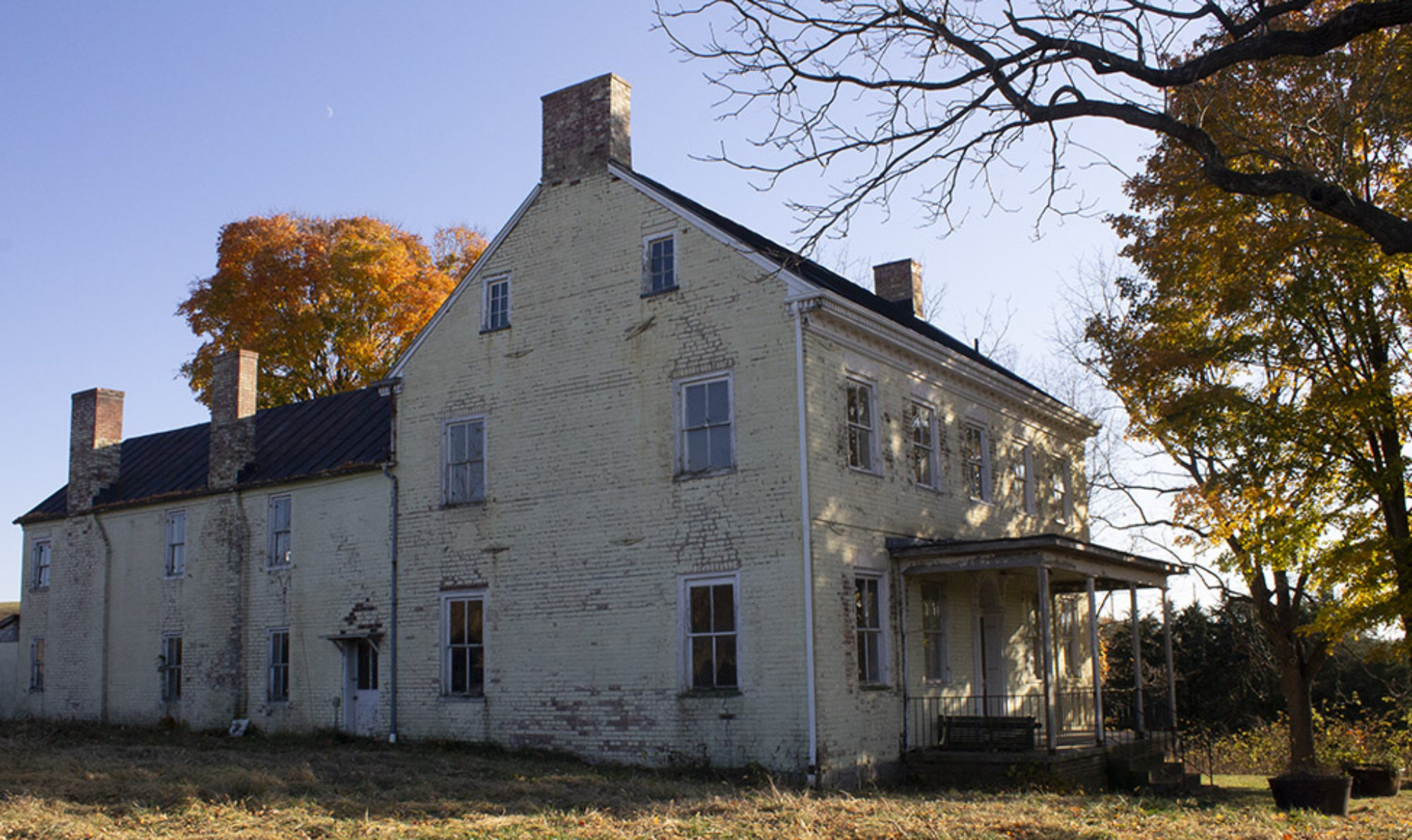Mary Homan was born on October 24, 1802, to John and Mary (Robinson) Homan. On October 26, 1826, two days after her twenty-fourth birthday, Mary and Colonel Abraham Lincoln were married. The couple had four daughters from 1827 – 1837, and one who passed away as an infant. Abraham and Mary first lived in a log home on Virginia John’s land until 1840, when Mary’s mother-in-law Dorcas Lincoln passed away. At that time, they moved into the Lincoln Homestead and began building the rear ell addition, completed in either 1841 or 1842. Mary lived on the Homestead for over 30 years. Similarly to Dorcas, Mary would have been responsible for running the household while Abraham managed the farm and sale of the goods produced on the farm; she would have spent a lot of her time cooking, making cloth and clothing, tending to vegetable gardens, taking care of her children, and managing the household and enslaved people. Though this work was focused on the home, it was key to the “prosperity and comfort” of her family.[1]

Also, similarly to Dorcas, Mary outlived Abraham by about 23 years. During that time, she would have been the sole person managing the Homestead. Not only did she have to manage everything for herself, but she also had to do it throughout the Civil War. While other Southern women suddenly had to manage their farms and enslaved people by themselves for the first time, Mary already had ten years of practice. Women were an important part of the Confederacy’s war effort; they made clothes and other supplies for soldiers, nursed soldiers when they became sick or wounded, and often had to give up their goods to support the Confederacy. They also served an important ideological role in the war: women were “essential to the formulation and articulation of Confederate nationalism” and supported the “ideal that….Confederate women should inspire their husbands and sons with the courage to do battle, and then cheerfully send them off.” The Shenandoah Valley witnessed significant military action throughout the conflict, and Mary would have had to work hard to keep the farm running while also maintaining control of her enslaved people. [2]
In the 1860 census, Mary Elizabeth Maupin – Abraham and Mary’s oldest daughter – was living in the Homestead with her mother, as her husband had passed away five years previously. Mary and Mary Elizabeth both directly supported the Confederacy. Not only did each woman own at least ten enslaved people, but they provided support for the Confederate Army numerous times. From 1862 – 1864, Mary Lincoln received payment from the army for the sale of straw, corn, hay, and for allowing them to hire a “1-4 horse Wagon Team & Teamster for 3 days.” Similarly, Mary Elizabeth sold them corn, flour, hay, and allowed the Confederacy to pasture their horses on her land several times from 1862 – 1864. [3]

In 1864, the Lincoln Homestead itself became directly involved in the Civil War. General Sheridan of the Union Army began what is known today as “The Burning” from September 26th to October 8th. In an effort to both destroy the crops, livestock, and supplies and dissolve support for the Confederacy, Ulysses S. Grant ordered Sheridan to leave the Valley “a barren waste.” Before it was all over, Sheridan and his men had burned 2,000 barns, 70 mills, and killed thousands of livestock. There were limits, however, to what was allowed to be burned: houses, and the property of widows, single women, and orphans was ordered to be left alone. [4]

Despite these orders, when Sheridan’s men reached Linville Creek, Mary and Mary Elizabeth Maupin – both widows – had extensive property burned. Mary had a “total loss” of around $2,200 in damages due to the Burning. This included “350 bushels of wheat, 17 tons of hay and straw [etc.], 12 head of cattle & cows, one barn and corn crib, one carriage house.” Mary Elizabeth lost “670 bush. wheat, 100 bushels corn, 25 tons hay [and straw etc.], one barn” resulting in a “total loss” of $2,000. Unfortunately, it is not possible to know for sure why Sheridan’s men disobeyed their orders and burned the property of these two widows. It could be that they knew that there was a familial connection between the Lincoln Homestead and President Lincoln. Perhaps the soldiers recognized that the Homestead was being supported by numerous enslaved people freed by the Emancipation Proclamation. [5]
[1] Cynthia A. Kierner, “‘Skillfull in Anie Country Worke’: Red, White, and Black in Colonial Virginia,” in Changing History: Virginia Women Through Four Centuries (Richmond: The Library of Virginia, 2013), 30.
[2] Jennifer R. Loux, “‘A Constant State of Hopes and Fears’: Women in the Secession Crisis, Civil War, and Reconstruction,” in Changing History: Virginia Women Through Four Centuries (Richmond: The Library of Virginia, 2013), 141, 147, and 149-155.
[3] United States Census Bureau, “United States Census, 1860, Virginia, United States,” Washington D.C.: National Archives and Records Administration, 1860; United States Census Bureau, “United States Census Slave Schedule, 1860, Virginia,” Washington D.C.: National Archives and Records Administration, 1860; “Mary Lincoln,” US, Confederate Citizens File, 1861 – 1865, Virginia, The National Archives, 1-19, https://www.fold3.com/file/42156931; “Mary E. Maupin,” US, Confederate Citizens File, 1861 – 1865, Virginia, The National Archives, 1-31, https://www.fold3.com/file/43807988. Dr. Richard S. Maupin passed away in 1855. It seems likely that Mary Elizabeth and her children lived with Mary Lincoln throughout the Civil War. Mary Elizabeth Maupin remarried John D. Pennybacker in August 1865. Mary Lincoln owned 10 enslaved people and Mary Elizabeth owned 12. Mary Elizabeth appears to have owned enslaved people with her children, as she is listed as “Elizabeth Maupin + 2 others.”
[4] “The Burning,” National Park Service, last modified January 30, 2023, https://www.nps.gov/articles/000/the-burning-shenandoah-valley-in-flames.htm.
[5] “We continue the publication of the list of damages sustained by citizens of Linvill’s Creek,” Rockingham Register, February 10, 1865, 2, https://www.newspapers.com/ima ge/909930950/; John L. Heatwole, The Burning: Sheridan in the Shenandoah Valley (Charlottesville: Rockbridge Publishing, 1998), 164.
